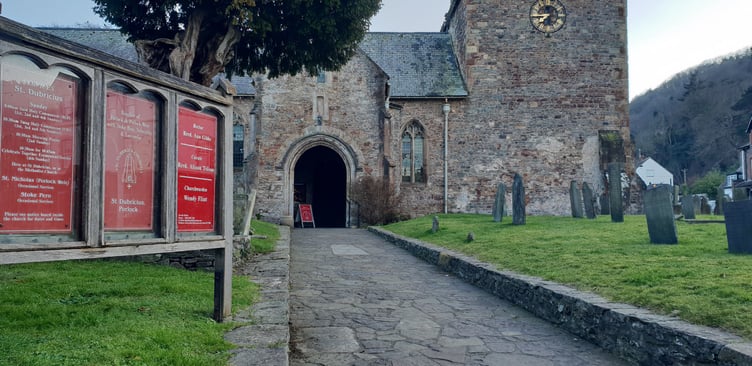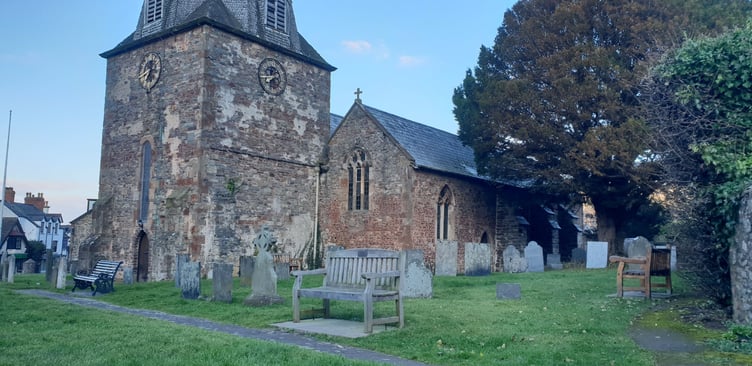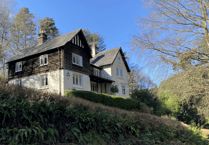A ONCE-in-a-generation repair and maintenance project is being proposed to make an Exmoor church more energy efficient and reduce its carbon footprint.
The plans for St Dubricius Church, in Porlock, are part of a commitment by the Church of England to ‘drastically reduce its carbon footprint by 2030’.
The St Dubricius parochial church council (PCC) wants to install solar panels along the roof of the south pitch of the nave in a concealed central valley and add a new seamlessly fitting glazed door in the porch.
Planning agents Jonathan Rhind Architects said the work would have an impact on the grade one listed church which in parts dates to about 1120, but the level of harm was considered ‘less than substantial’.
A spokesperson said: “The church faces ongoing challenges in balancing preservation with modern functionality, struggling with outdated infrastructure, making it difficult to maintain comfortable interior conditions and ensure adequate security.
“Heating inefficiencies result in significant energy costs, alongside losing heat through drafts and poor insulation, leaving congregations uncomfortable during colder months.

“The need for renewable energy sources has become more urgent as the diocesan advisory committee seeks to achieve net zero by 2030 and contribute to sustainability efforts.
“To ensure the church remains a comfortable and welcoming space, addressing draft prevention is crucial.
“Enhancing older entrances can significantly reduce unwanted air flow while preserving their historical integrity.
“This improvement also contributes to better weather shielding, protecting the interior from the elements, and maintaining a stable environment for visitors.
“There is a desire to encourage visitors to see the heritage of the church by making the church doorway more inviting when seen from the road.
“With glass doors in place the inner doors can be left open when weather is good, and the interior will be visible from outside, inviting them inside.

“In addition to these benefits, security remains a key consideration, as safeguarding the church against unauthorised access and vandalism ensures it continues to serve as a vital community space.
“Addressing these needs requires a thoughtful approach that enhances the building’s functionality while respecting its architectural significance, allowing the church to continue serving its communities for generations to come.”
The spokesperson said the Church of England as part of efforts to combat a global climate crisis wanted to reduce carbon emissions from buildings, schools, and transport, encourage sustainable practices across dioceses, cathedrals, and institutions, and lead by example to inspire broader community action on climate change.
They said: “By transitioning to sustainability, churches demonstrate that even historic and culturally significant buildings can embrace eco-friendly solutions while maintaining their heritage.”
The nave roof needed to be renewed due to ‘nail sickness’, providing an ‘optimal opportunity’ to integrate the solar panels in both a cost-effective and environmentally responsible manner compared to a standalone installation.
The spokesperson said the project represented a thoughtful approach to conserving the heritage of the church building and its setting while enhancing community access, education, and appreciation of West Somerset’s historic environment.





Comments
This article has no comments yet. Be the first to leave a comment.